Elvira Nabiullina: ‘We orient to that petroleum price will be $50 again, but…’
Slow China, pacification of the Federal Reserve System and positive from Russia
Last week was rich in addresses of leading figures of the banking sector. Herman Gref's lecture, the head of Sberbank, was very popular among our readers. Besides, on Friday, Elvira Nabiullina, the chairwoman of the Central Bank of Russia (CB), met with journalists after the session of the board of directors, where it was decided to preserve the key rate at 11% per year. This time, the head of the Central Bank of the Russian Federation decided to mention the main theses. Realnoe Vremya presents its readers the full version of the address of the head of CB.
Three facts about Russian economy
In my address, I would like to present our vision of the current situation in the Russian and global economy, perspectives of development for three years in advance, discuss factors, on the basis of which we made a decision, and risks we took into account.
To start with, it is the situation in the global economy and, first of all, on commodity markets. During last months, the trajectory of oil prices was between basic and risky scenarios, and it might be said that the possibility of preservation of the price at the level of less than $50 a barrel increased. Secondly, the dynamics of the Russian economy in the third quarter was a bit more favourable than we had expected. Thirdly, as for the growth of consumer prices, here the dynamics was a bit worse than we thought. The actual inflation is formed at the level of the upper boundary of our forecast. As inflation decelerated, according to our forecast and in conditions of weakening inflation risks, the Bank of Russia will renew the deceleration of the key rate in the proximate sessions of the board of directors.
I will mention the key factors in detail starting from the situation in the world economy and global financial markets and their influence on the economy of Russia.
Slow China, pacification of the Fed and positive from Russia
The external conditions are still uneasy. And unfavourable tendencies, which appeared this summer, are preserved.
First of all, it is a high volatility on global markets conditioned by a frequent change of moods and expectations of global investors. This situation is linked with the presence of several sources of indeterminacy.
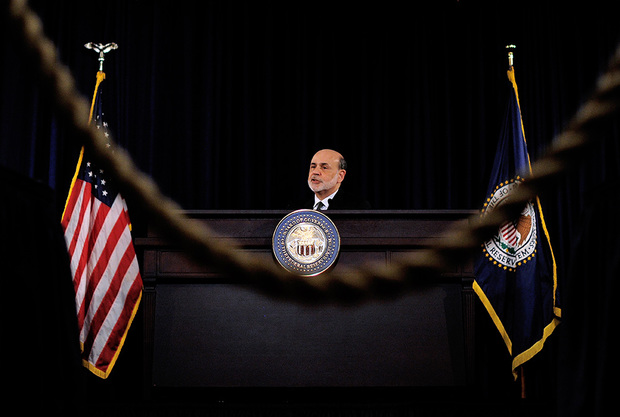
Firstly, it is the speed of the normalization of the monetary policy of the Federal reserve System of the USA. The market participants' review on the trajectory of the increase of the rate of the Fed of the USA leads to the revaluation of the attractiveness of the assets. As a result, we observe fluctuations on the foreign exchange market, instability of scales and directions of capital inflows, fluctuations on equity and commodity markets.
Secondly, the investors are still worried about the prospect of growth of developing countries, first of all, China. The deceleration of the growth of China can have a strong impact on the global economy, including on raw material prices.
The growth rate of the global market, in general, will remain low during the proximate years. In our basic forecast, we judge from the fact that in 2016 petroleum will return to the average level of the year equal to $50. Nevertheless, the possibility that it won't happen and the prices will be lower than $50/barrel for a longer period has increased.
Although the exterior conditions are unfavourable, it is impossible not to mentions that the economy of Russia demonstrates the ability to adapt to their rapid changes. The adaptation of the balance of payments, on the whole, happened at the beginning of the year. And the economic stabilization seemed to appear in the third quarter. The ability of the economy to adapt affected the moods of global investors who began to look at the prospects of the Russian economy more positively. Despite the preservation of high volatility on global financial and commodity markets, these last months the risk premium for Russia noticeably reduced and approached the levels of other countries with similar export structure.
The first money brook flew to Russia
Net inflow of private equities to Russia was observed in the third quarter of 2015, which happened for the first time since the second quarter of 2010. Some Russian companies managed to place bonds on international markets successfully against of a background of the reduction of risk premium. Taking into account this fact, we decreased the value of net outflow of the private equity, according to the year-end results from $70 (in the forecast of November in the Principal Direction of the Monetary Policy) to $58.
The currency exposures linked with the amortization of the external debt significantly decreased, compared to the end of the last year and the beginning of this year. Our surveys of companies show that the profile of payments, exclusive of intra-group loans, became quite equal. And, in addition, banks and companies earned a great reserve of foreign liquid assets.
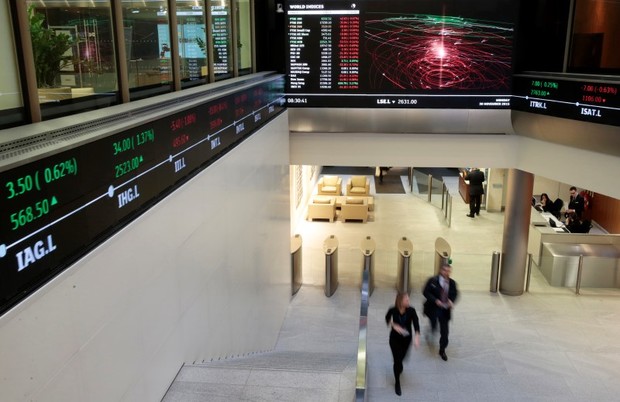
The receipts on the current account remain stable, and, in our opinion, this year its outstanding balance will make $63bn. It is a bit higher in comparison with the previous year. What is more, we will continue operations of currency refinancing and react flexibly to the changes of demands of banks for currency liquidity. On balance, foreign debt payments won't put an additional pressure on the exchange market, including this year.
Despite increased geopolitical risks and risks of preservation of low prices for petroleum, the situation with the balance of payments seems to be quite stable as a whole.
Acute phase is over
And now about the second factor – the main tendencies in the dynamics of the economic activity.
In our view, it can be said about the completion of the acute phase of the economic decline. Year-on-year deceleration of GDP in the third quarter was not very strong compared to the second quarter. According to our estimation, GDP will reduce by 3,7-3,9% as a whole for 2015. It is a bit better than our previous forecast that was 3,9-4,4%.
However, it is early to speak about the formation of the stable positive tendency yet. The dynamics of principal economic indicators provide a mixed picture. There is a small sign of improvement, but the basis for recovery of the economy and, moreover, for relatively high and stable midterm growth rates has not been formed yet.
I would like to mention the following positive tendencies.
At first, the dynamics of a number of productions oriented to export, and extraction of raw materials and production of intermediate materials (products of woodworking and chemical industry) are among them. The growth of production in the export industry, in turn, favoured the increase of freight turnover of transport, first of all, with respect to pipeline and railway transport.
'Gathering pace, household consumption continues to reduce'
Secondly, it is the import substitution. There are prerequisites for it, and, above all, they have been formed by trade restrictions and weakened ruble. Import substitution became the key factor that supported the production in agriculture and a number of process manufacturing. First of all, in the production of consumer goods: food, home care, cosmetics, medicine and in a number of related industries.
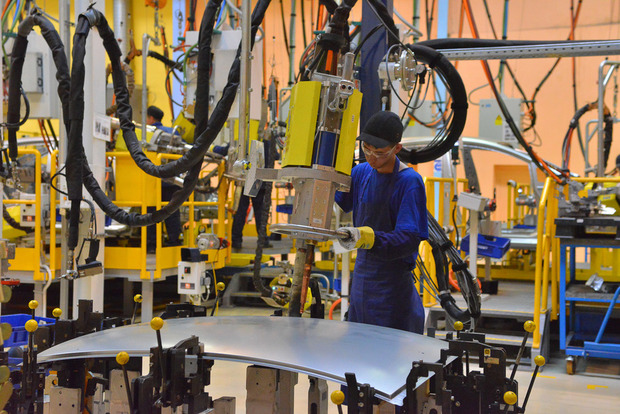
The processes of import substitution made a significant contribution to the improvement of production dynamics of capital goods. The increase of production was observed in some subsectors of machine-building and electric equipment, which was favoured by, in particular, the necessity of reduction of dependence on import of technologies in the primary sector and defence industry.
I will mention one more time that at the same time positive advances related to import substitution or export growth appear only in some segments of the markets but at present don't make a significant contribution to the dynamics of production, in general, concerning separate commodity group and types of goods.
The dynamics of production of capital goods and investments in the fixed capital allows to hope the investment decline will be slower. But a high indeterminacy of economic prospects and weak customer demand will continue to restrict the growth potential of the investment activity in the near future.
Gathering pace, household consumption continues to reduce against a background of a fall in real income of the population. Meanwhile, the level of unemployment practically doesn't change, and the dynamics of salaries is still the main channel of the adaptation of the labour market to the changed conditions. However, the optimization costs of the workforce might accelerate soon in the sectors with stable and significant reduction of production. It can lead to some growth of the level of unemployment. And the desire of companies not to lose qualified workers and demographic tendencies will confine unemployment again.
Changes in behavior of the population also influence consumption besides behaviour of income. Under the influence of high indeterminacy, people are more inclined to save money and less disposed to borrow money.
Growth of crediting export and import sectors renewed
I will mention monetary factors before switching to inflation. During last months, they were gradually getting soft but remained moderately tough. Most part of the reduction of the key rate of the Bank of Russia, which had been realized earlier, has been 'recovered' in the dynamics of bank rates. This is why rates on credits and deposits were reducing slower in the second half-year period than in the first one.
A certain revival of corporate credit continued. At the beginning of December growth rate of credit of non-finance organizations made 9,5% or 3,3% with the exception of revaluation of the currency. The credit activity is supported by some recovery of demand for credits in conditions of reduction of rates and gradual slowdown of the deterioration of the credit portfolio's quality. Realization of the state programme on additional capitalization of banks makes a positive contribution.
There are positive changes in the credit structure. So, credit growth in a number of sectors, including export and import ones (for instance, chemical and food industries), renewed.
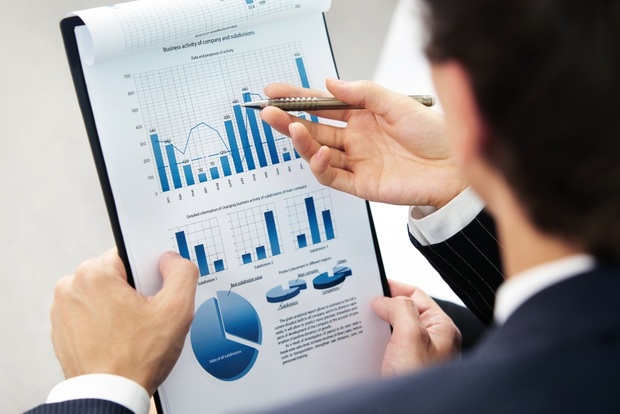
At the same time bank requirements for borrowers and loan security remain quite strict. The growth potential of the credit activity is restricted to high level of the debt load in the economy. We forecast a conservation of moderate growth rates of credit and monetary aggregates that won't create significant pro-inflation risks from money supply.
And as for the situation regarding the ruble liquidity, during this year the need of banks in liquidity through our operations reduced. It was linked with the fact that liquidity reached the banking sector by means of financing of budget expenses from the Reserve Fund. And rates of the monetary market fluctuated near the key rate. A seasonal growth of the bank needs in refinancing is expected in December 2015. It is connected mainly with traditional for this period dynamics of cash and budget flows. Taking into account a significant volume of free market provision, we plan to satisfy their requirements by dint of auction repurchase agreement. Against of a background of seasonal reduction of demand for liquidity at the beginning of the next year, the volume of funds at auctions of CB will reduce.
Year-end inflation will be close to 13%
And I would like to speak about the most important factor for us – the principal tendencies in the dynamics of inflation.
Monthly price growth rates reduced except seasonality in November. However, it is slower than we expected. First of all – under the influence of the dynamics of the rate and inflation expectations. Apart from seasonality, monthly price growth rates remain at the same level that exceeds comparable periods of 2012-2013. The year-end inflation will be close to 13%, that is to say, next to the top boundary of our forecast.
But the contribution of the rate of exchange to the inflation is decreasing. Prices for different commodity groups and services react to the dynamics of the rate differently. The influence of the rate on non-food goods is more continuous in particular. Share growth of the Russian products in consumption favoured in some measure the reduction of the effect of transference.
We expect a sharp deceleration of the annual inflation to 7,5-8% in the first quarter of the next year. And the base effect will be one of the reasons.
In our calculation, the process of adaptation to the foreign trade restrictions towards Turkey will have an insignificant impact on the inflation as a whole – within the limits of 0,2-0,4 percentage point in the next months.

Moderately strict monetary factors and weak dynamics of consumer demand will be key factors that will bring to the deceleration of the annual growth rates to 5,5-6,5% at the end of 2016.
Inflation expectations of the population and producers are to be reduced in order to make the deceleration of inflation stable. The notion of the future inflation along with the level of rates have a strong influence on the decisions in the economy. These are people's decisions on how to administer their funds – whether to spend or save; the business decision regarding investments, changes in salary, etc.
Now the inflation expectations of the people and producers are still at the same level. Inflation expectations of people grew a bit in November. People are alert to the acceleration of price growth of some goods, especially everyday goods, even if it was caused by short-term factors. And it is clear.
However, there must be a reversal in the dynamics of expectations after the reduction of real indicators of inflation, their fall to the lower level principally. One of the risks of our inflation forecast is that such a reversal can happen over some time or be so noticeable, and inflation expectations will remain at the high level for a long period.
Taking into account the augmentation of the inflation risks while risks of the economy shutdown are preserved, today we made a decision to preserve the key rate at the same level. I want to emphasize once again that as the inflation decelerates, according to the forecast and under the condition of weakening inflation risks, the Bank of Russia will renew the reduction of the key rate in the proximate sessions of the board of directors.
I would like to remind that our inflation forecast for the first quarter of 2016 is 7,5 – 8%, and for January it is lower than 10%.
GNP will decrease by 0,5-1%
In conclusion, I will speak a bit about our forecast concerning the midterm prospect, which will be published today in the Report on Monetary Policy. We have three scenarios of the development of the situation. The prerequisites on exterior conditions and forecasts of their main macro indicators did not change significantly in comparison with those noted in the Principal Directions.
In our basic forecast, we expect oil price to be close to $50 a barrel during three years. We continue considering the optimistic scenario in which oil price recovers faster. This recovery corresponds to the forecasts of many international organizations, analysts and participants of the petroleum market.
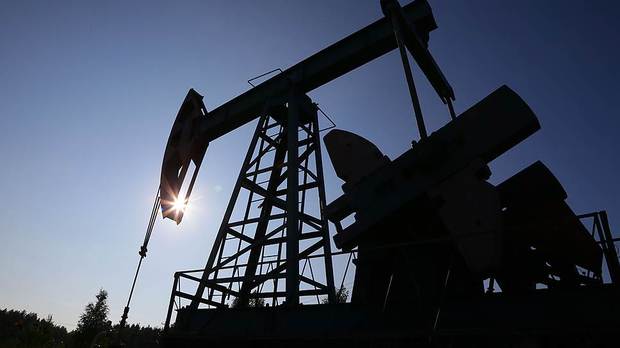
What is more, we consider the risky scenario that presupposes oil price to be lower than $40 a barrel. The latest dynamics of oil prices demonstrates that topicality of this scenario increased.
In the basic scenario, we expect that in 2016 adaptation of the economy to the new conditions, change of its structure, overflow of resources to more productive sectors will continue. As we estimate, by the end of the year GDP will reduce less, compared to this year – by 0,5-1%. In the second half of 2016, we expect a turn of the tendency in the stock movements. According to our forecasts, the investment decline will gradually terminate.
In 2017, there is a forecast concerning the recovery of investment and operational activity and, first of all, in the sectors that have a potential to substitute the import or competitiveness on foreign markets. GDP growth rates in 2017, as we think, will reach a positive area. In our opinion, consumption will start to grow a bit later – as income behavior in conditions of the revival of the economic activity.
As for the state of balance of payments, the outstanding balance of the current account in 2016-2017 will be quite stable – about $50-60bn. Net export will make a positive contribution to the dynamics of GDP. The volumes of external debt payments will slowly decrease. And payments of the external liabilities will reduce faster than the demand for foreign assets. It will be a reason for the reduction of capital outflow to $50-60bn in 2016-2017.
…And in 2016 GDP will reduce by 2-3%
Taking into consideration the level of receipts from export and accumulated level of foreign assets, we expect the augmentation of currency refinancing from the Bank of Russia won't be necessary.
In case of realization of the risky scenario, the situation will be different. The fall in GDP in 2016 may be equal to 2-3%. Increased inflation pressure, first of all, from the forex volatility, will require a more strict monetary management or, more precisely, a higher trajectory of the key rate in comparison with the basic scenario. And further deterioration of external conditions, if it seems to be long, will require an additional adaptation of the balance of payments and economy in general. If required, we will be ready to use all our instruments, including operations on the currency market, to guarantee the maintenance of the financial stability.

We consider possible to provide not only a stable work of financial markets and banking sector but also reduction of the inflation to the target value of 4% in 2017 and its stabilization near this level in future. The consolidation of positive tendencies in the structure of the economic activity, their distribution for a wide range of goods and services is a guarantee of the recovery of the economy and its return to the stable economic growth, regardless of a change of the state of affairs of the world markets. And the creation of the predictable economic environment for the population and business, whose essential part is the stability of prices, is the most important criterion for the development of these tendencies.